Carreg Cennen long walk
Carreg Cennen
The imposing ruin of Carreg Cennen Castle standing high above the river on a sheer cliff is now the haunt of Ravens and Crows. This picturesque setting is the natural focal point for the start of the walks detailed here.
The site was a Welsh stronghold long before the English Lords recognised its strategic importance and decided in the 13th century to build their Castle. The original castle was built by the Welsh Princes of the old kingdom of Deheubarth, most notable amongst these being Lord Rhys ap Gruffudd, who won back territory from the Norman invaders. In 1462, shortly after the War of the Roses, the existing medieval castle was largely destroyed, as it was deemed too much of a threat to the monarchy.
The outcrop of rock on which the castle stands is an outlier of Carboniferous Limestone set amongst the more ancient Old Red Sandstone. The immediate area around the castle is agricultural land used mostly for rearing sheep and cattle. It is a charming patchwork of wooded valleys, small fields and hedgerows. This however, soon gives way on the southwest to the Black Mountain with mile upon mile of windswept, high ground where barely a tree interrupts the view. This rugged landscape is used for grazing hardy sheep and wild ponies.
The area of woodland skirting the castle on its south side is important for nature conservation and has been designated as a Local Nature Reserve whilst the rock itself is a Geological Site of Special Scientific Interest.
Although the ragged outline of the castle dominates the skyline and grabs the attention, there are always other things of interest to catch the eye. The walks pass through a variety of habitats important for wildlife. Shady Oak and Ash clad hillsides change to river valleys where tumbling streams run into fast flowing rivers lined with Alder, Birch and Willow. The tree, flower and shrub communities change as the underlying rock changes from Limestone to Sandstone and the insect and bird life varies from season to season. A visitor to the area is just as likely to see a colourful little Gold Crest, Wales’s smallest breeding bird, as they are to see its largest bird of prey, the Red Kite.
Map of walk with points of interest
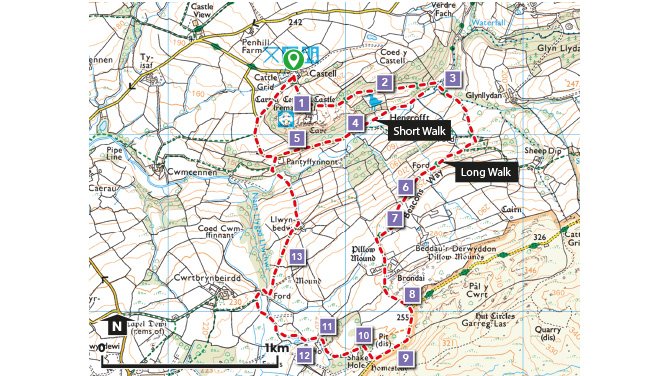
Download the walk leaflet Download GPX file
Video of the walk around Carreg Cennen Castle
Why Walk?
Enjoy one of two circular walks around this spectacular castle in Carmarthenshire, positioned high above the river Cennen nearly a thousand feet above sea level on the western edge of the Brecon Beacons National Park. There are few castles in Europe which can boast a more spectacular location than this. Make sure you rent a torch to explore the castle’s cave.
How Long?
Two circular signposted walks; Short walk is 2.7k long (1.6m) end the long route is 6km long (3.7m)
How Hard?
The short circular route has approx.. 88m (288ft) of ascent on good paths and country lanes.
The long route has approx. 200m of ascent (656ft), is more challenging and follows rough tracks and country lanes. Both walks are quite steep in places but provide continuous interest and superb views of the castle and the surrounding landscape.
Starting point - Castle café/shop.
Car Park - Car Park adjacent to the Carreg Cennen Farm
Public Transport - Llandeilo 5km/3miles away Refreshments - ✔
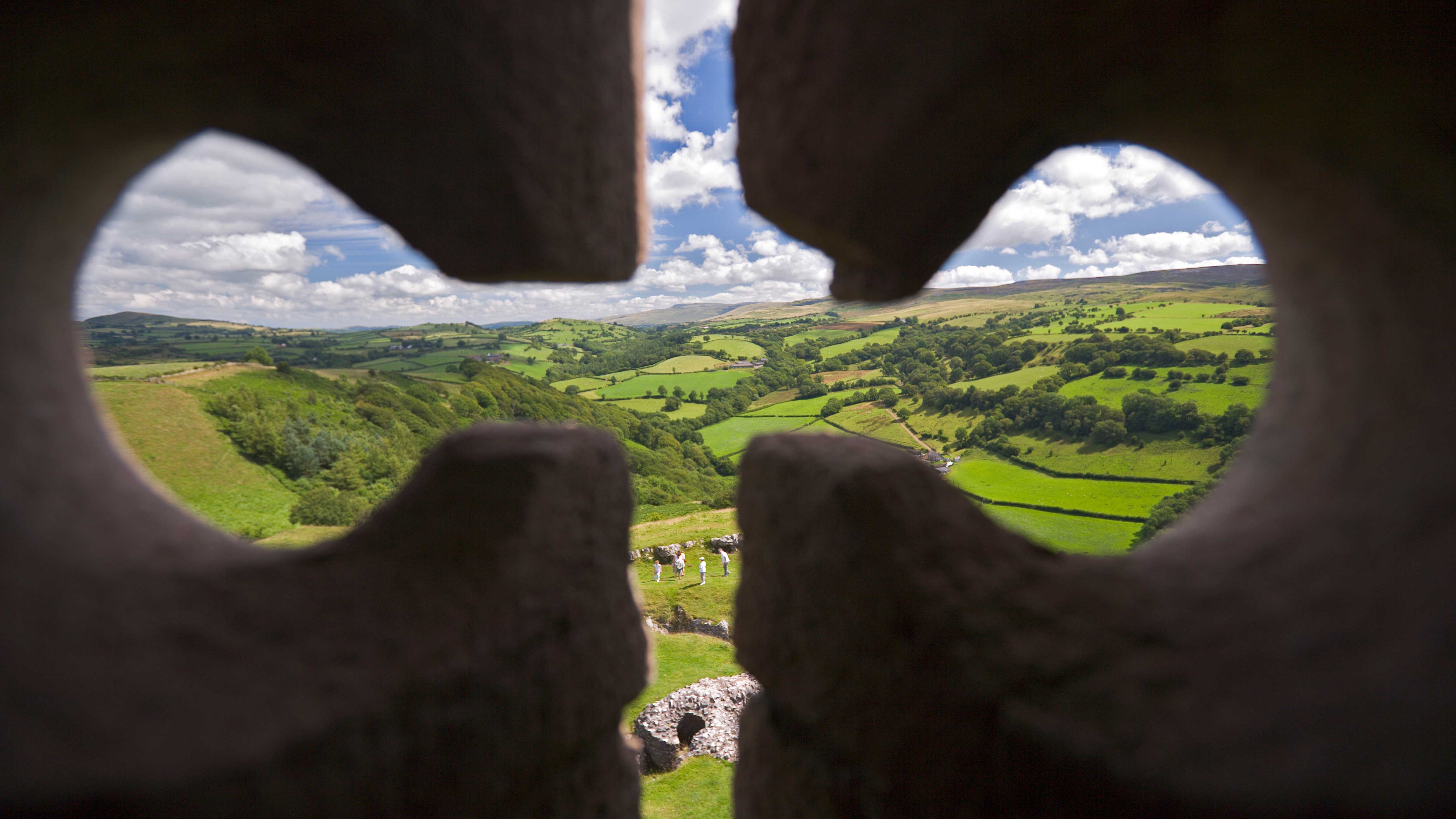
View from Carreg Cennen Castle
Points of interest
1. The outcrop of rock on which the castle stands is an outlier of Carboniferous Limestone set amongst the more ancient Old Red Sandstone. Evidence has been found that indicates a settlement existed on this site in prehistoric times. The site of the castle was a Welsh stronghold long before English Lords built the existing castle in the 13th century.
2. The predominantly Ash and Hawthorn woodland on the thin soils over Limestone give way to the Oak woodland further down slope on the old red sandstone.
3. More insect species live on Oak trees than any other native tree. Along with the insect life the acorns provide a valuable food source for a variety of animals. Commoners often held the right of pannage which allowed them to turn out their pigs in the Oak woods to grub for acorns.
4. On either side of the path are two ruined buildings with a stone pitched pathway between them. The woodland is a Site of Special Scientific Interest and is a good place to look for woodland birds like Wood Pigeon, Nuthatch, Blue Tit and Wren.
5. There is a rich diversity of flowers and ferns on the hedge banks beneath the Hazel hedgerow, such as, Harts tongue Fern, Hard Fern, Dog Rose, Violets, Fox glove and Wood Sage.
Look for Coal Tits, Chaffinch, Redpoll and Gold Crest in the small conifer plantation and the old overgrown hedge lines.
7. This is a good place to scan the skies in search of Wales’s most famous bird of prey, the Red Kite. You may also see Buzzards. Both have loud mewing calls and are often heard before they are seen.
8. Beddau’r Derwyddon, not really Druids Graves as the name implies but man-made pillow mounds, which are mediaeval warrens for breeding rabbits for food.
9. On the uphill side of the road lies the hard gritstone, whilst over the wall lie the limestone layers of the Carboniferous era.
10. The three large, deep hollows in the ground here are caused by the collapse of underground caverns in the limestone.
11. The large ruined lime kiln was used to provide “quicklime” for making cement and fertiliser for the fields. The quarry for the limestone is immediately behind the kiln.
12. Opposite the lime kiln is the cave called Llygad Llwchwr. This is the source of the river Loughor reaching the sea 30 kilometres away, it becomes one of Wales’ largest and most important estuaries, supporting thousands of resident and migratory birds.
13. Flocks of Redwing and Fieldfare can be seen in the fields around here in winter.
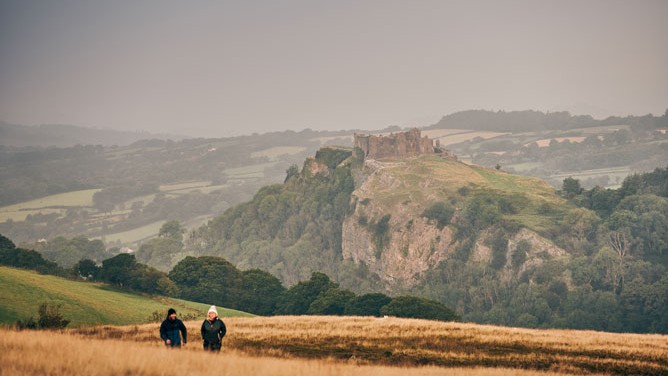
View of Carreg Cennen castle
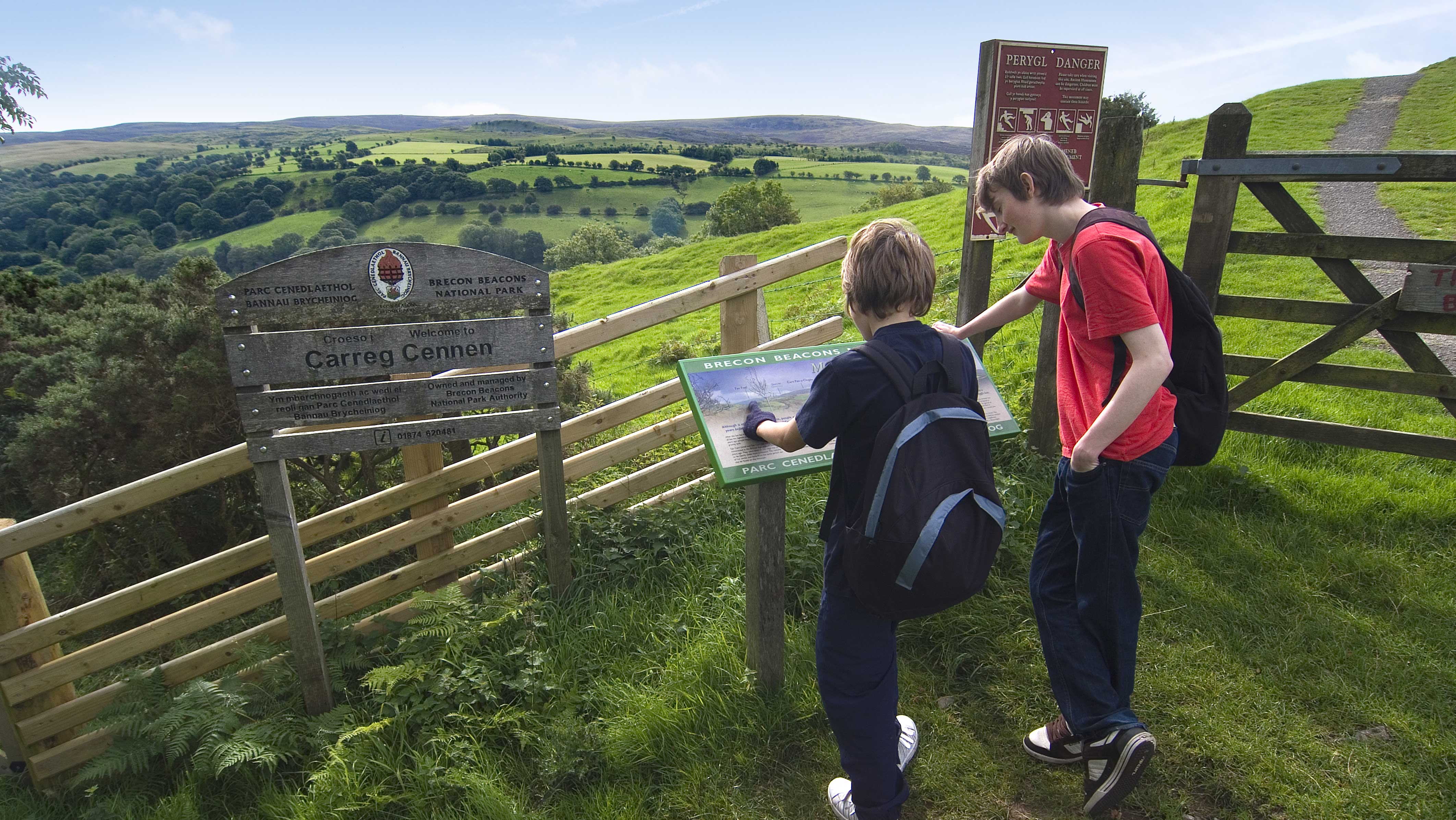
Carreg Cennen History
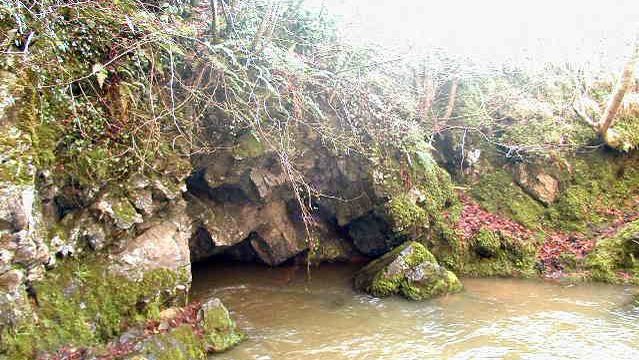
Llygad Llwchwr